
Dental products company Envista Holdings (NYSE:NVST) beat Wall Street’s revenue expectations in Q1 CY2025, but sales fell by 1.1% year on year to $616.9 million. Its non-GAAP profit of $0.24 per share was 17.1% above analysts’ consensus estimates.
Is now the time to buy Envista? Find out by accessing our full research report, it’s free.
Envista (NVST) Q1 CY2025 Highlights:
- Revenue: $616.9 million vs analyst estimates of $608.3 million (1.1% year-on-year decline, 1.4% beat)
- Adjusted EPS: $0.24 vs analyst estimates of $0.20 (17.1% beat)
- Adjusted EBITDA: $79 million vs analyst estimates of $76.37 million (12.8% margin, 3.4% beat)
- Management reiterated its full-year Adjusted EPS guidance of $1 at the midpoint
- Operating Margin: 6.3%, down from 7.7% in the same quarter last year
- Free Cash Flow was -$5.6 million, down from $29.3 million in the same quarter last year
- Market Capitalization: $2.73 billion
"In the first quarter, Envista delivered results in line with our expectations building on the momentum established across the second half of 2024," said Paul Keel, CEO.
Company Overview
Uniting more than 30 trusted brands including Nobel Biocare, Ormco, and DEXIS under one corporate umbrella, Envista Holdings (NYSE:NVST) is a global dental products company that provides equipment, consumables, and specialized technologies for dental professionals.
Sales Growth
A company’s long-term sales performance is one signal of its overall quality. Any business can put up a good quarter or two, but many enduring ones grow for years. Unfortunately, Envista struggled to consistently increase demand as its $2.50 billion of sales for the trailing 12 months was close to its revenue five years ago. This wasn’t a great result and suggests it’s a low quality business.
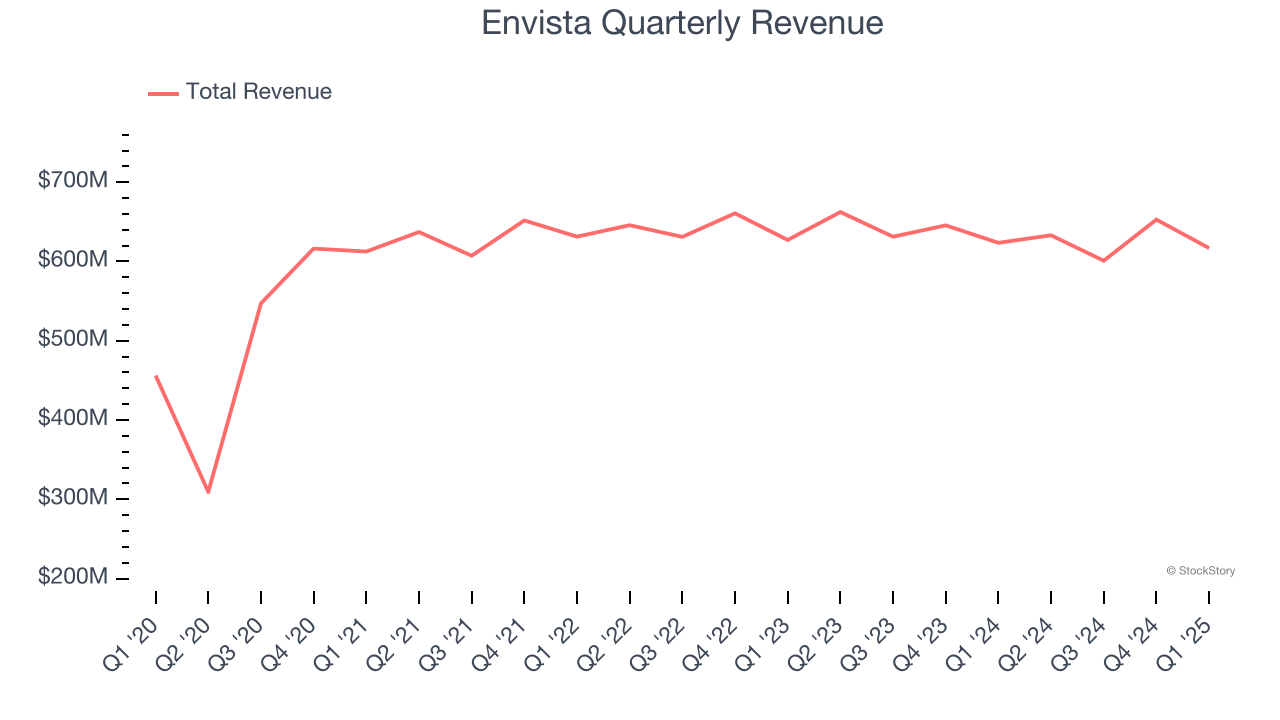
We at StockStory place the most emphasis on long-term growth, but within healthcare, a half-decade historical view may miss recent innovations or disruptive industry trends. Envista’s annualized revenue declines of 1.2% over the last two years align with its five-year trend, suggesting its demand has consistently shrunk. 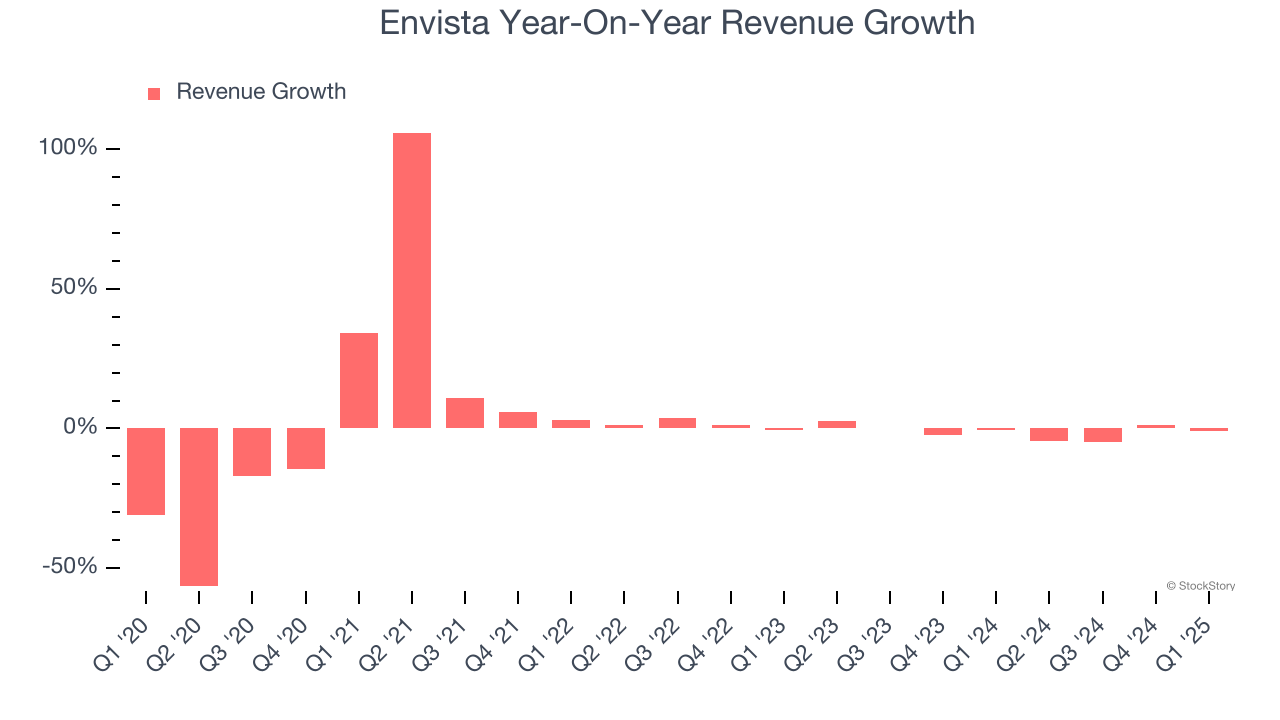
This quarter, Envista’s revenue fell by 1.1% year on year to $616.9 million but beat Wall Street’s estimates by 1.4%.
Looking ahead, sell-side analysts expect revenue to grow 1.3% over the next 12 months. Although this projection suggests its newer products and services will spur better top-line performance, it is still below average for the sector.
Here at StockStory, we certainly understand the potential of thematic investing. Diverse winners from Microsoft (MSFT) to Alphabet (GOOG), Coca-Cola (KO) to Monster Beverage (MNST) could all have been identified as promising growth stories with a megatrend driving the growth. So, in that spirit, we’ve identified a relatively under-the-radar profitable growth stock benefiting from the rise of AI, available to you FREE via this link.
Operating Margin
Although Envista was profitable this quarter from an operational perspective, it’s generally struggled over a longer time period. Its expensive cost structure has contributed to an average operating margin of negative 2.3% over the last five years. Unprofitable healthcare companies require extra attention because they could get caught swimming naked when the tide goes out. It’s hard to trust that the business can endure a full cycle.
Analyzing the trend in its profitability, Envista’s operating margin decreased by 49.4 percentage points over the last five years. This performance was caused by more recent speed bumps as the company’s margin fell by 53.5 percentage points on a two-year basis. We’re disappointed in these results because it shows its expenses were rising and it couldn’t pass those costs onto its customers.
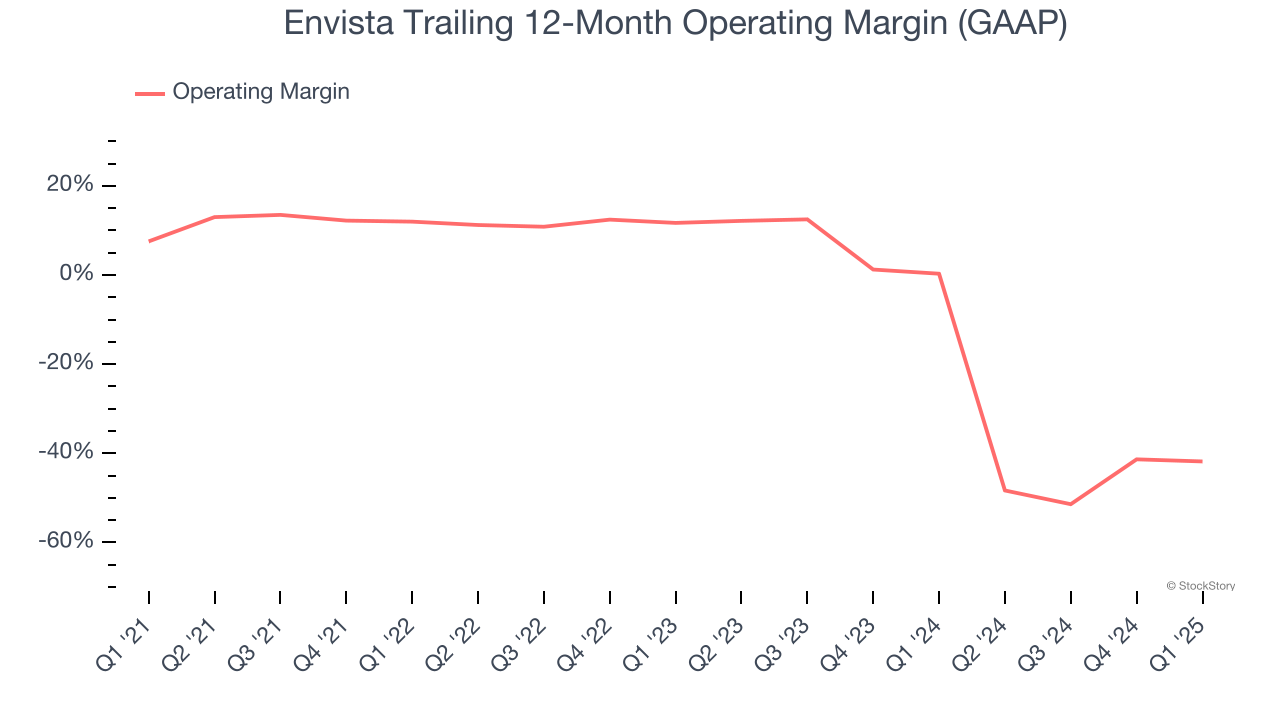
In Q1, Envista generated an operating profit margin of 6.3%, down 1.4 percentage points year on year. This reduction is quite minuscule and indicates the company’s overall cost structure has been relatively stable.
Earnings Per Share
We track the long-term change in earnings per share (EPS) for the same reason as long-term revenue growth. Compared to revenue, however, EPS highlights whether a company’s growth is profitable.
Sadly for Envista, its EPS declined by 13.9% annually over the last five years while its revenue was flat. This tells us the company struggled because its fixed cost base made it difficult to adjust to choppy demand.
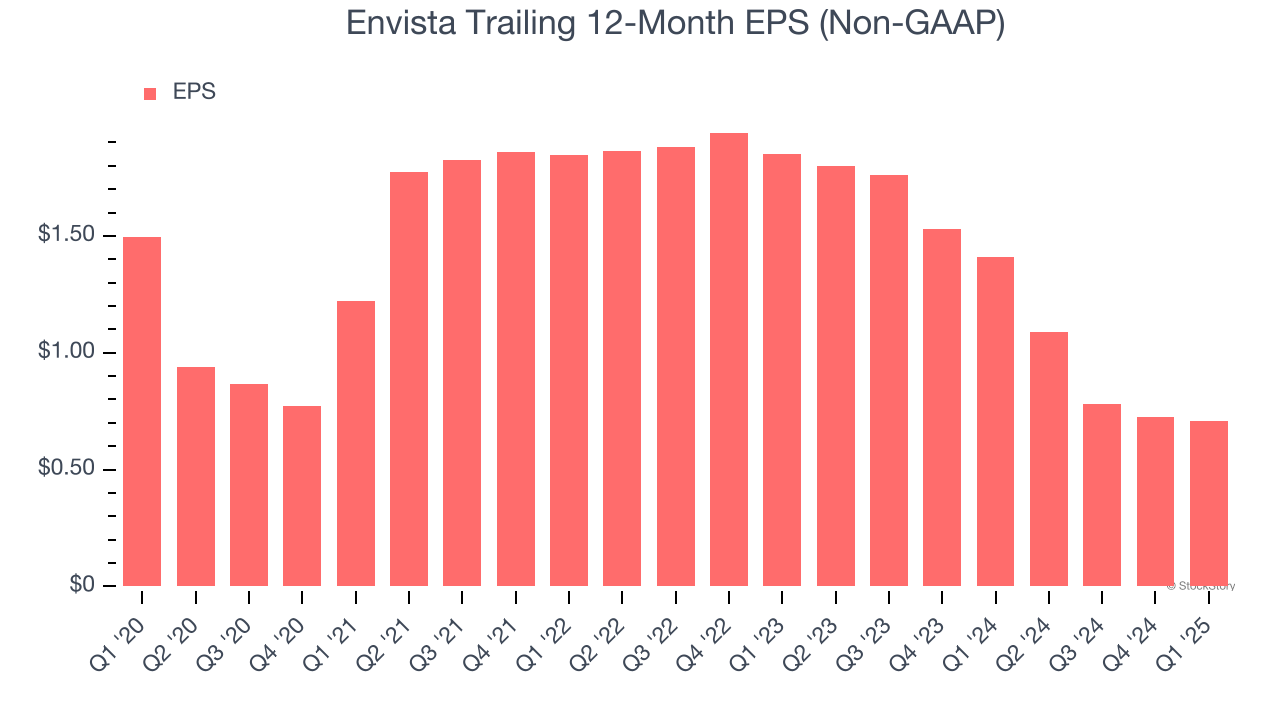
Diving into the nuances of Envista’s earnings can give us a better understanding of its performance. As we mentioned earlier, Envista’s operating margin declined by 49.4 percentage points over the last five years. Its share count also grew by 9%, meaning the company not only became less efficient with its operating expenses but also diluted its shareholders. 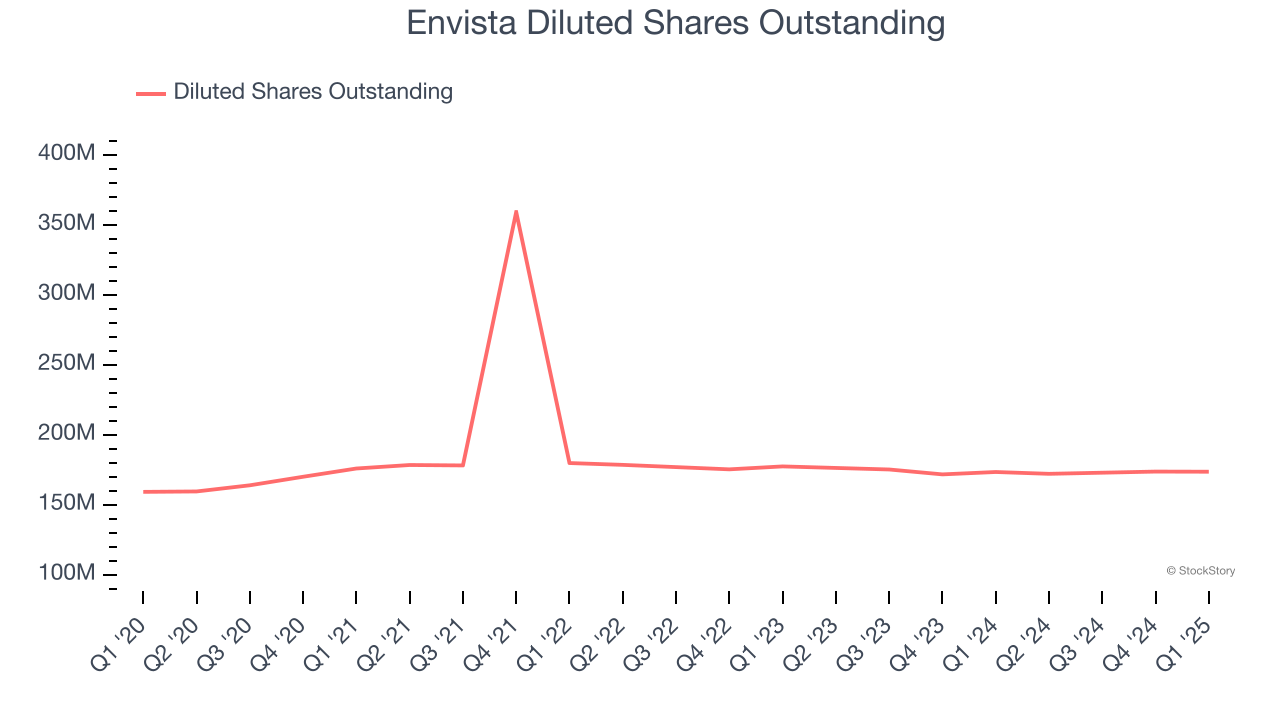
In Q1, Envista reported EPS at $0.24, down from $0.26 in the same quarter last year. Despite falling year on year, this print easily cleared analysts’ estimates. Over the next 12 months, Wall Street expects Envista’s full-year EPS of $0.71 to grow 44.8%.
Key Takeaways from Envista’s Q1 Results
We enjoyed seeing Envista beat analysts’ revenue, EPS, and EBITDA expectations this quarter. We were also happy its full-year EPS guidance outperformed Wall Street’s estimates. Overall, we think this was a solid quarter with some key areas of upside. The stock remained flat at $16.34 immediately after reporting.
Envista may have had a good quarter, but does that mean you should invest right now? What happened in the latest quarter matters, but not as much as longer-term business quality and valuation, when deciding whether to invest in this stock. We cover that in our actionable full research report which you can read here, it’s free.
